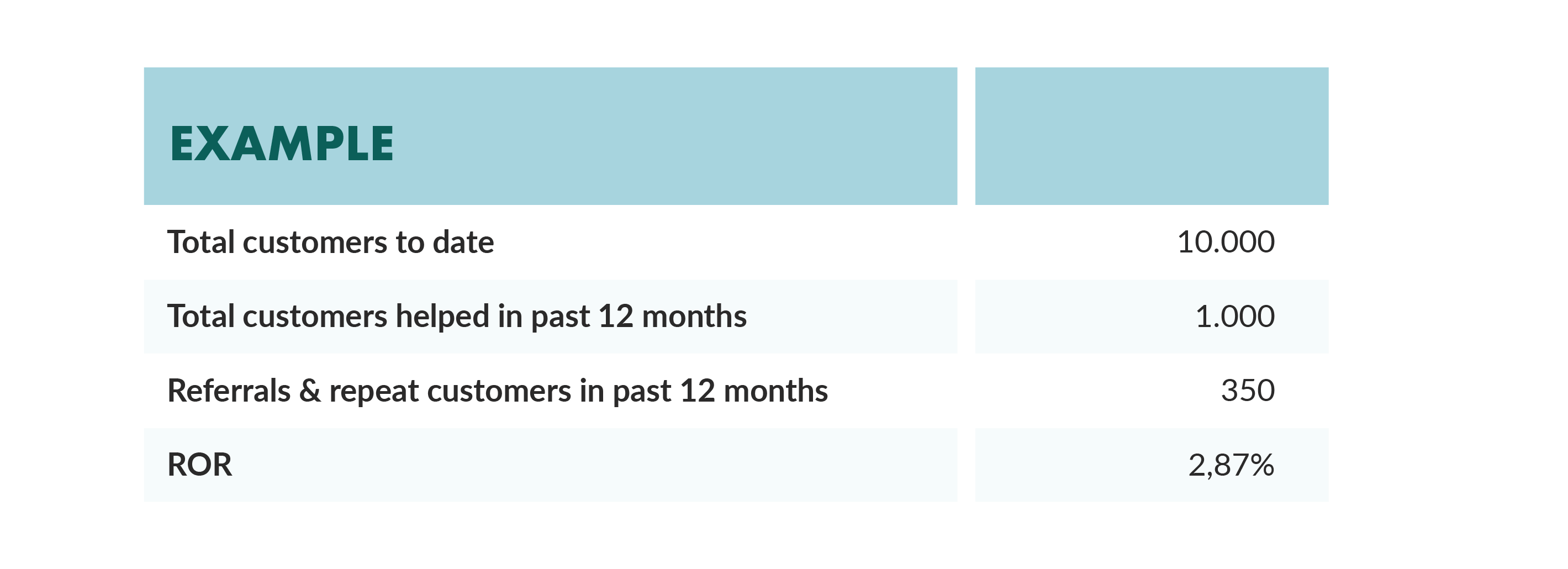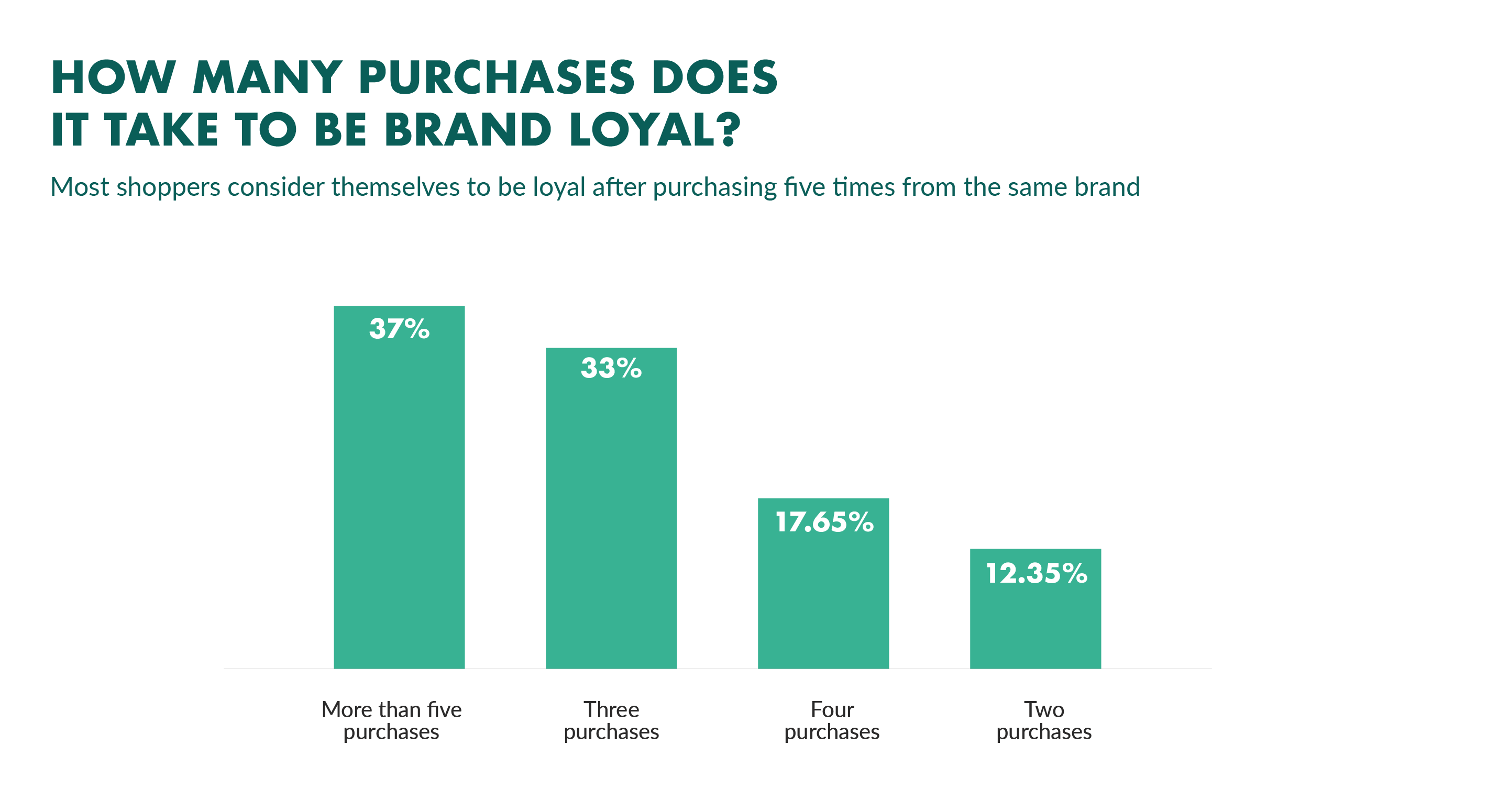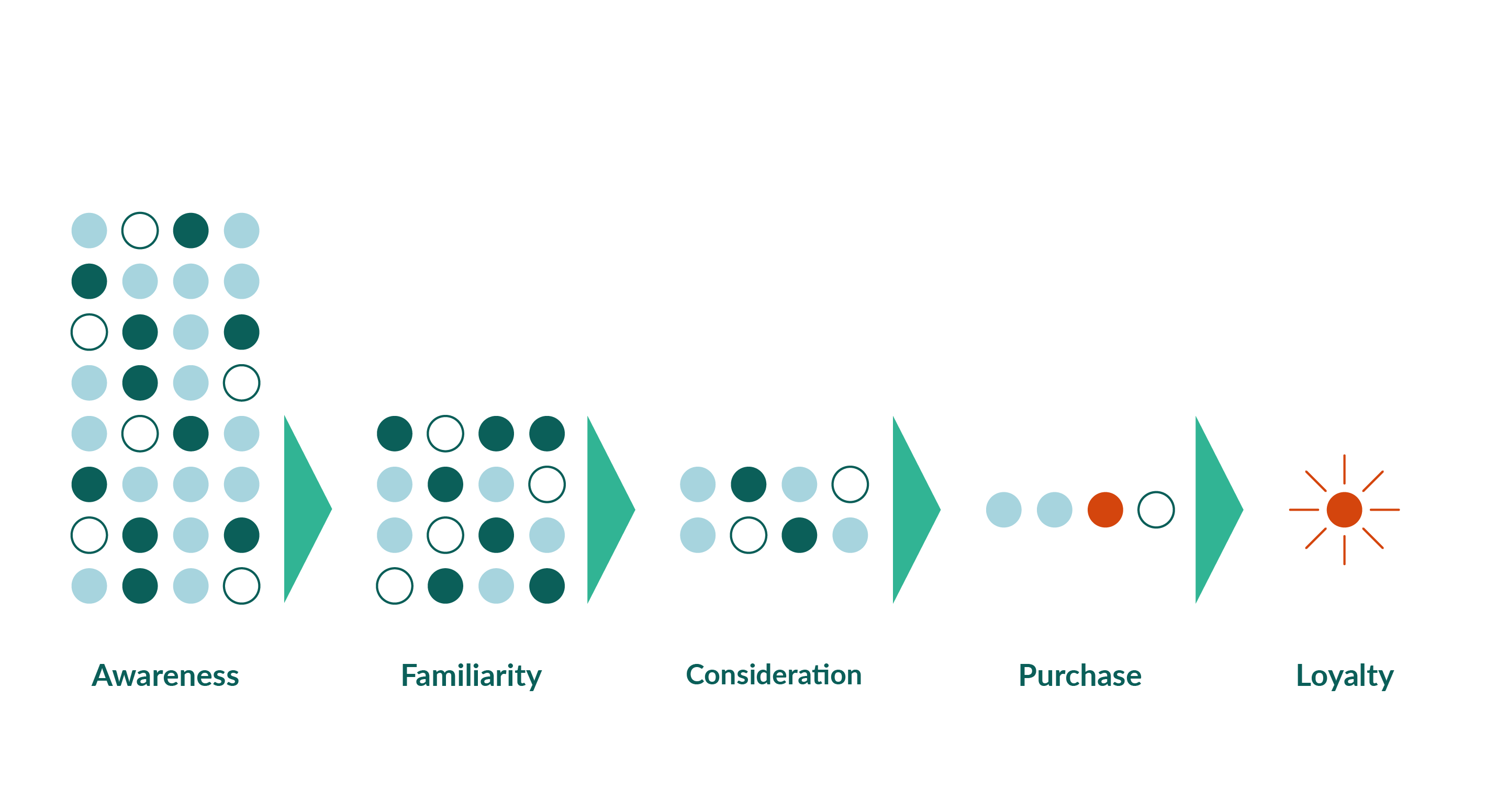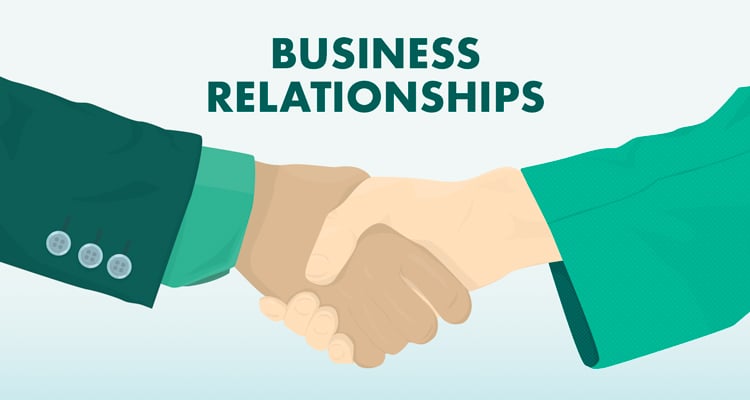If I were to ask you what makes a business successful, you probably would say: a unique, unforgettable product + an ability to deliver an amazing customer service.
And you’d be totally right.
However, although important, these two elements are not the only ones that drive success.
In order to attract new and retain existing customers, you also need to dedicate resources and invest into building strong, long-term business relationships that help people see the value and achieve their goals with a product or service.
But there’s more to it than just responding to emails on time, sending email marketing campaigns with discounts or being polite on the phone.
Just like your personal relationships, business relationships take time to develop. It's an investment.
And as with anything you invest in, it compounds over time.
and usually require a process that turns every touchpoint with a customer into an opportunity for communication, trust, and mutual growth.
To put it simply – to be successful, businesses need to establish positive relationships with customers.
Why business relationships matter
It's because creating a relationship with both new and potential customers allows businesses to offer a more personalized and enticing customer experience.
And it is exactly the quality of the experience you offer that will determine whether of not you’ll establish long-term business success
In a recent study, 86% of customers claim their experiences are just as important as the actual product or service they purchase.
This means businesses are not only required to provide products or services their customers need, but they must also deliver a great end-to-end experience across every touchpoint.
Relationships metrics: ROI vs ROR
We all have heard about Return on Investment (ROI) – a performance metric used to evaluate the effectiveness of money being spent and the profit that it yields.
If we look from a relationship perspective, a new and more effective term can be of use – Return on Relationship (ROR). It can provide deeper insights on the effectiveness of a business’ personality and its ability to connect with people.
Ted Rubin, a leading social marketing strategist and CMO of Photofy, defines ROI and ROR as follows:
“ROR (Return on Relationship) is the value accrued by a person or a brand due to nurturing a relationship. ROI (Return on Investment) is simple dollars and cents. ROR is the value (perceived and real) that will accrue over time through loyalty, recommendations, and sharing.”
And it is ROR that puts an emphasis on building positive relationships.
How to calculate Return on Relationship
Calculating ROR doesn’t require complex analytics. Instead, you can use a simple formula to determine how successful your business is at generating referrals or repeat business.
Use this simple calculation to calculate your ROR.
- First, calculate the total number of customers who have purchased from you.
- Next, determine how many of those customers you have helped over the past 12 months.
- Then, from those people you have helped, determine which came to you as a referral, or were repeat customers.
- Finally, divide the total number of people you helped in the past 12 months by total number of referrals or repeat customers.
Here’s an example of this calculation:

Calculating your company's ROR is a simple way to visualize your relationship-building efforts.
For example, if you have a high ROR percentage, it indicates how often you provide value to your customer and how successful you are at nurturing strong business relationships. In contrast, a low ROR percentage implies that there are opportunities to improve existing relationships with your customer base.
Ultimately, the more customers you help, the higher your ROR.
To dig deeper into your company's ROR, consider the areas of your business that interacts closely with your customers:
- Are you using social media to drive engagement?
- Do you send emails that address your customer's needs?
- Does your content encourage readers to share with their network?
- Do you listen to your customers and respond quickly with a solution?
Ultimately, your ROR is a reflection of the positive relationships you create between your business and your customers.
Business relationships & technology
Today, in order to build strong, long-term, positive business relationships, companies rely on technology and create a central command-center to manage, monitor, and communicate with customers.
These tools become the key to matching the right team to send the right message to the right customer.
Therefore, businesses that adopt a Customer Relationship Management (CRM) system – which centralizes and streamlines the work of all teams – have a greater ability to improve customer relationships, contributing to a higher ROR and ROI.
- CRM averages an ROI of $8.71 for every dollar spent.
- 74% of businesses improve customer relationships with CRM.
- 65% of sales teams using CRM reach their sales quotas (compared to only 22% who do not).
Shifting to a relationship-centric approach is great for improving customer experiences and interactions with a business. However, this requires more time and effort, as well as collaboration across departments.
Business relationships & customer retention
To stay afloat and grow, especially for SaaS companies, you need to be able to make customers come back for more.
This could include a repeat subscription, an upgrade to a higher-tier level, or a cross-sell of another product or service. If this is not achieved, you will start to see your customers churn.
Research from Aberdeen Group found that businesses with a consistent service quality across multiple channels were able to retain 89% of their customers. In contrast, businesses that were unable to provide a consistent experience on multiple channels retained only 33% of their customers.
To improve customer service and reduce customer churn, businesses often use CRM software to create an omnichannel experience – meaning that emails, SMS, social media, and other platforms are integrated into a single platform.
This allows for messages and data to be collected, organized, and coordinated in a central database. From here, all departments have access to the same customer data, which helps you come up with better responses, timely proposals, and improved relations.
Let’s see what the best CRM software can do to help you improve customer retention:
- Targeting customers with tailor-made offers. CRM collects a lot of data on a customer’s spending patterns and purchase history. This can be used to send relevant content to keep the customer engaged with your brand or send specialized offers relevant to their interests.
- Improving engagement with loyalty programs. Some businesses interact with their customers using a loyalty program. These can include points, discounts, or rewards whenever a customer uses or associates with a business. Loyalty programs can be initiated for your most profitable customers to create a more memorable experience for them so they can continue to enjoy your business in a new way.
- Assessing performance with customer feedback. Feedback is essential for improving business relationships. You can use CRM to obtain feedback directly from a customer by identifying key engagement points and successful transactions. These areas can become the focus of incentive schemes that reward customers for helpful advice.
Customer retention is always the best way to maintain long-term relationships with customers. While insights and data offer ways to improve those relationships, being able to calculate the rate of retention identifies the key areas you need to focus on more.
Business relationships & brand loyalty
When people strongly favor your business over all other available options, that’s called brand loyalty.
These are people who don’t need to be convinced or heavily advertised to because they already enjoy your business and prefer to be with you over competitors with similar offerings.
In a consumer survey, 37% of consumers say it takes five or more purchases before they consider themselves to be loyal to a brand.

Yet, to bring a customer back more than five times is not an easy achievement. Here are what consumers demand to improve the likelihood of becoming brand loyal:
- 67% of consumer want 24/7 customer service
- 71% of consumers anticipate more frequent discounts
- 58% seek out free shipping and returns
Every day, people encounter numerous impressions with businesses through marketing, advertising, news reports, or word-of-mouth. Most of these people are not actively shopping, but they are aware of a variety of options on the market. After so much exposure, some brands start to become more familiar than others. Until this moment, every impression matters because it will influence their consideration and decision to purchase.

When the decision has finally been made to purchase from a particular business, the post-purchase experience is triggered. This is where new types of nurturing and engagement with customers begin. It also creates new touchpoints that did not exist in the traditional marketing journey.
In a study conducted by Fulcrum, they reported that 75% of customers who received a birthday message from a business they purchased from thought more highly of that business. It also showed that 88% of those positive responses led to an increase in brand loyalty.
To build long-lasting business relationships with customers after the purchase, a different approach is needed. Aside from sending birthday emails, there are several strategies you can use for your business with the help of a CRM system.
7 ways CRM can help improve business relationships
CRM helps businesses to develop and execute strategies that result in long-term relationships with their customers. This, in turn, creates loyalty and also improves customer retention.
At its core, a CRM system helps businesses collect customer data and share consistent records across all departments and teams. Using this information, companies can recognize opportunities and communicate with customers in a scalable way.
Here are a few way you can use a CRM platform to improve business relationships:
1. Better interactions at touchpoints
Whether a customer is filling out a lead generation form or sending a message on social media, all interactions can be recorded and managed in one location. Once data is collected, it can trigger a personalized email sequence or notify the right department to respond accordingly. Ultimately, CRM offers a 360-degree view of a customer and helps to coordinate interactions with a business.
2. Respond faster to customers
Customer decision-making depends on how fast you can provide the information and support they need to make the decision. With a CRM in place, customers can receive a response to their inquiry within hours, and customer support teams can serve them promptly.
3. Ask for feedback
Your customers are the best source of inspiration when it comes to improving your business relationships. Asking for feedback is not only a way to identify objections and spot friction, but also to discover favorite features and experiences. Try incentivized feedback programs to discover the voice of your customers and ways to improve your customer retention.
4. Optimize every workflow
CRM has multiple ways to optimize both customer experience and sales process. Sales and marketing teams deal with a large amount of data to analyze trends, find possible leads, and follow up for potential sales. CRM workflow automation helps to track, monitor, and manage the status of a lead or customer to create a seamless business experience.
5. Use data for personalization
Knowing how to interpret data is the secret to successful business relationships. Since every customer interacts with your business in their own way, look for trends to create a more personalized experience. For example, data can help to reveal your most loyal customers, allowing you to create offers that add more value to their lives.
6. Access to the same information
Think of a CRM system as the ultimate teamwork hub. It's like having a central spot where everyone can see what's up with our customers.
This means all our teams, be it sales or customer support, are always in the loop.
So what's the big win here? You handle your customers way more smoothly and efficiently. Plus, it's easy for anyone in the team to pick up from where someone else left off. They've got all the past chats and current needs of the customer right at their fingertips.
7. Targeted communication
Imagine a CRM system as a sophisticated tool that helps you categorize your customers. It uses criteria like their buying habits, personal details, and level of engagement.
What's great about this? It allows you to customize your communication and marketing for each group. Customers get messages that really matter to them. This isn't just about more effective marketing.
It's about connecting better with your customers, fostering stronger relationships, and enhancing loyalty.
Conclusion
Now, more than ever, focusing on relationships is a necessity for long-term business growth.
Both new and returning customers place a high value on their interactions and experiences with your business. While it may take more time, effort and resources to translate new ideas into a positive Return on Relationship – people are going to appreciate your investment in them.
Customers also ask
How do you measure the success of a business relationship?
Measuring the success of a business relationship often involves evaluating several qualitative and quantitative indicators.
Qualitatively, a successful relationship can be gauged by mutual respect, frequent communication, and trust between parties. Quantitatively, businesses might look at metrics like the longevity of the relationship, repeat transactions, referrals, and the overall profitability associated with the partnership.
Consistent feedback and regular satisfaction surveys can also provide insights into how both parties view the efficacy of the relationship.
What specific strategies do successful companies use to maintain long-term business relationships?
Successful companies maintain long-term business relationships by consistently delivering on promises and maintaining a high standard of service. They also emphasize regular, open communication and seek to understand and meet their partners' needs proactively.
Adaptability plays a crucial role; being willing to adjust processes and agreements in response to evolving business environments or partners' changing needs can help sustain long-term relationships.
What are the common challenges or pitfalls in building business relationships and how can they be avoided?
Building business relationships comes with its share of challenges, including miscommunications, mismatched expectations, and conflicts of interest. These pitfalls can often be avoided by establishing clear communication channels and setting expectations from the outset.
Regularly revisiting and, if necessary, revising the terms of the relationship can help ensure alignment. Building a culture of honesty and transparency, where issues are addressed promptly and openly, can prevent many potential conflicts and deepen trust.



